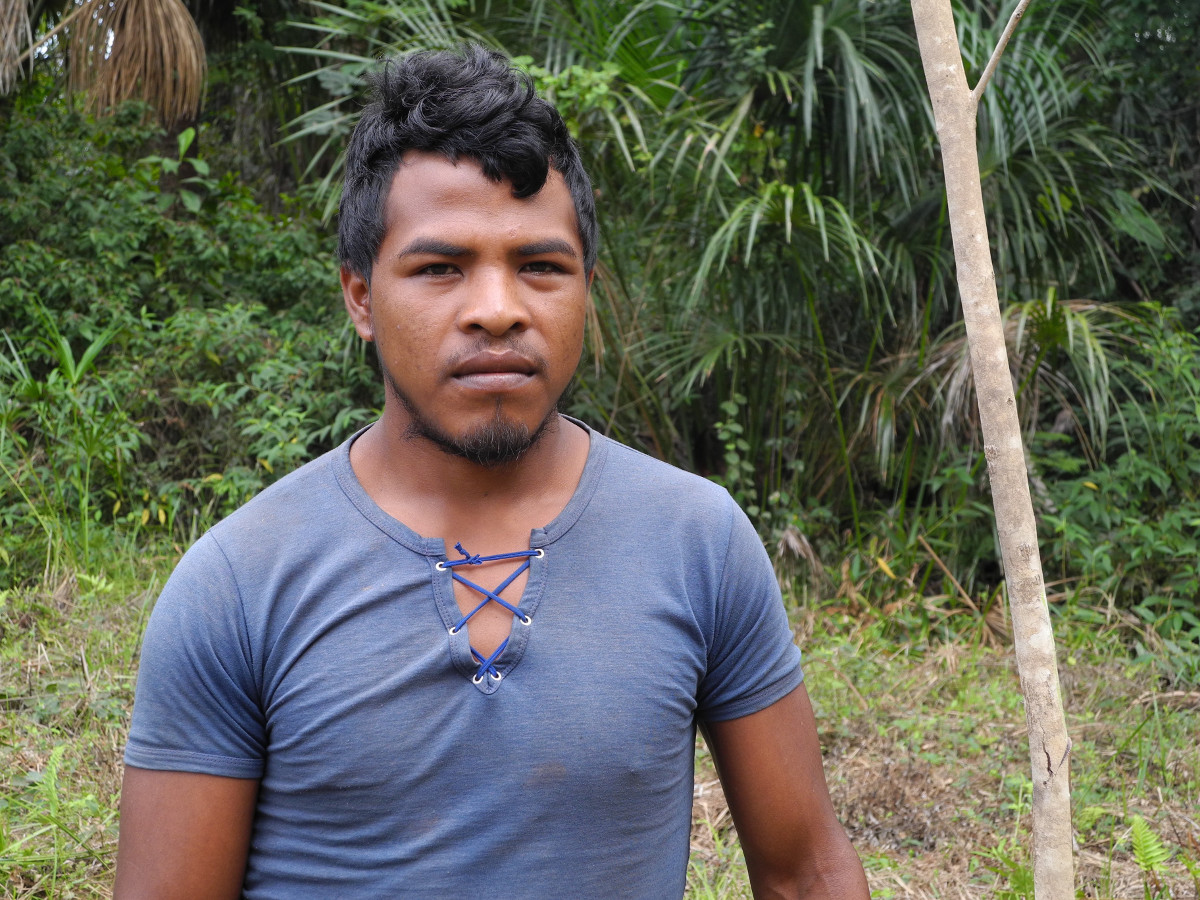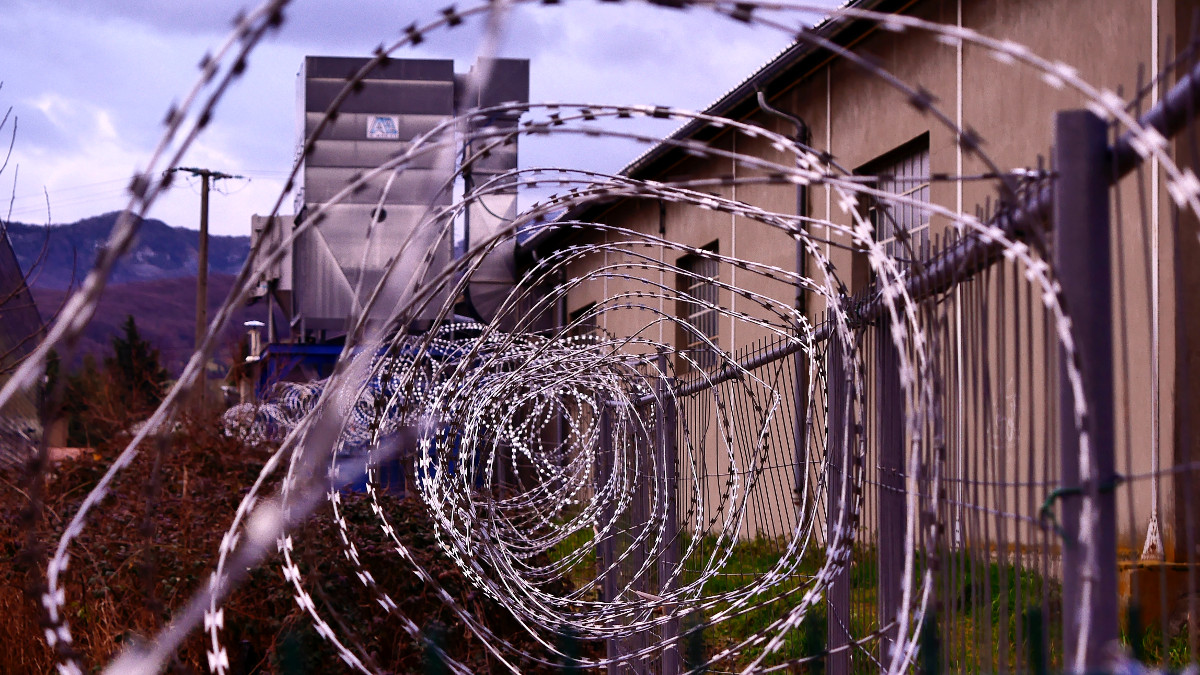
by DGR News Service | Dec 3, 2019 | Defensive Violence, Direct Action
Photo credit: Kinessa Johnson and True Activist
Editor’s Note: DGR does not endorse Kinessa Johnson or VETPAW, and views significant parts of their work as problematic (e.g. pervasive use of nationalistic propaganda, an implicit white saviour narrative, and echoes of imperialism). However, this phenomenon is interesting and worth discussing.
by Liam Campbell
Kinessa Johnson is a heavily tattooed U.S. military veteran, she is also an experienced firearms instructor and mechanic. After completing one tour in Afghanistan she joined VETPAW, an NGO that focuses on providing training and resources for park rangers and anti-poaching groups that protect endangered species. According to Johnson, park rangers in Africa face extreme danger “they lost about 187 guys last year over trying to save rhinos and elephants.” VETPAW’s response is to send U.S. combat veterans to provide specialist training, in hopes that they can help park rangers reduce both poaching and their own casualties.
Framing their mission.
According to Johnson “after the first obvious priority of enforcing existing poaching laws, educating the locals on protecting their country’s natural resources is most important overall.” Although this perspective has an implicitly patronising tone, there is also some validity in it — park rangers are often under resourced, which results in poor training and inadequate equipment. Sending rangers highly-trained specialists makes sense, as does sending them better equipment. What gives me pause about a group like VETPAW is how they’ve framed their mission:
“VETPAW is a group of post 9/11 US veterans with combat skills who are committed to protecting and training Park Rangers to combat poaching on the ground in Africa.
We employ veterans to help fight the increasing unemployment rate of this group in the US but also, and most importantly, because their skills learned on the frontlines in Afghanistan is unrivaled. These highly trained service men and women lead the war against brutality and oppression, for both human beings and the animal kingdom.”
Problematic language.
What stands out to me is the combination of nationalistic buzzwords and the patronising framing. Why specify “post 9/11 US veterans?” Because those are all trigger words for American nationalism. It’s also problematic that their mission frames U.S. veterans as champions who opposed “brutality and oppression.” Last, but not least, is their use of the phrase “animal kingdom” which is a subconscious frame implying an inherent hierarchy (where, presumably, either humans or a christian god presides at the top).
Ecofascism.
To me, this phenomenon is reminiscent of proto ecofascism, the first seed of a new form of fascist movement that wraps itself in nationalistic flags and hides behind the morality of environmentalism. It’s also concerning that groups like VETPAW would have an obvious appeal to combat veterans who are interested in hunting economically desperate Africans, under the guise of charity.
Deep Green Perspective.
From the a Deep Green Resistance analysis perspective, this is a complex issue. It would obviously be better to quietly and respectfully provide resources to indigenously-led groups but, on the other hand, if organisations like this end up resulting in tangible reductions in poaching, that may be better than nothing. What do you think about this issue?
Let us know in the comments.
Join the Resistance
Deep Green Resistance is a political movement for liberation and revolution. We aim for nothing less than total liberation from extractive economics, white supremacy, patriarchy, colonialism, industrialism, and the culture of empire that we call civilization. This is a war for survival, and we’re losing. We aim to turn the tide. We mean to win.

by DGR News Service | Nov 26, 2019 | Culture of Resistance, The Solution: Resistance
by Liam Campbell
How bad is our current trajectory? Looking back through geologic history, there are a handful of examples of abrupt climate change and ecosystem collapse, periods when runaway feedback systems changed the planet so suddenly that biomes didn’t have time to adapt. These events were always accompanied by mass death. About 55 million years ago the Earth experienced an era of rapid ecosystem collapse called the Paleocene-Eocene Thermal Maximum (PETM), which was most likely triggered by a sudden increase in atmospheric CO2 and a cascade of self reinforcing climate feedback systems; this is eerily similar to what we’re witnessing unfold today. One shocking difference between today’s events and the PETM is the rate of change. It’s estimated that the PETM released about 0.24 gigatonnes of CO2 into the atmosphere per year, over the course of 20,000 to 50,000 years. By contrast, humans are now releasing over 37 gigatonnes of CO2 per year (~150 times more). Compared to the PETM, what’s unfolding today is more akin to an explosion, which means Earth’s ecosystems will have dramatically less time to adapt. Any reasonable person would conclude that we’re now in the midst of a global mass extinction, and that the only rational response is to cease all industrial scale ecosystem destruction in order to mitigate the harm.
Unfortunately, humans have developed an extreme addiction to industrialism, an addiction so severe that many people prefer to retreat into delusion rather than face the consequences of withdrawal. A common excuse for continuing the addiction is that “ceasing industrial-scale exploitation of Earth’s ecosystems would result in a lot of people dying.” While this is technically true, it blatantly ignores the obvious conclusion that continuing industrial scale ecological exploitation will result in essentially all people dying, alongside the vast majority of other species. These ridiculous mental gymnastics would be painful for a healthy person, but they are commonplace among addicts — after all, immense cognitive dissonance is less excruciating than consciously acknowledging that you are cannibalising your children’s futures in exchange for modern concenviences. How then are we supposed to mitigate ecological destruction in the midst of a planet ruled by irrational addicts? It seems reasonable to rule out the possibility of doing so via consensus. What about mass mobilisation against industrialism? Given the fact that any meaningful action would result in a significant decline in the quality of life of every “civilised” culture on the planet, mass mobilisation seems unlikely; most of these people will be easily distracted by delusions and false solutions, both of which will be sold at rapidly inflating prices. So that leaves us with asymetric and unpopular solutions — after all, the majority of the world is addicted and addicts become upset when you take away their drug.
Deep Green Resistance approaches the problem from this perspective, that any viable strategies must be executable by small numbers of people and must not require public support.

by DGR News Service | Nov 6, 2019 | Biodiversity & Habitat Destruction, Colonialism & Conquest, Defensive Violence, Direct Action, Human Supremacy, Movement Building & Support
Image: Sarah Shenker, Survival International
by Liam Campbell
Paulo Paulino Guajajara, known as Kwahu, has been murdered by loggers in a part of the Amazon currently occupied by the Brazilian government. Equipped with only rudimentary weapons and body armour, and lacking medical assistance, Rainforest Guardians like Guajajara regularly face death at the hands of both government officials and natural resource exploiters. Their only advantages are their intimate knowledge of the rainforest and their deep commitment to protecting those living systems. Guajajara was protecting both his own ancestral land and also the lands of their uncontacted neighbours, the Awá tribe, when he was shot and killed by assassins. Guajajara is not the first ecological activist to be murdered; in April, 3 Rainforest Guardians were similarly slain.
It’s difficult to write this article from the relative luxury and comfort of a Western European country, especially having experienced a small modicum of the difficulties of even living for a few days in jungles like the Amazon — let alone inhabiting those claustrophobic settings with the knowledge that well armed groups of men are hunting for you. I cannot even begin to imagine the courage Guajajara must have embodied in order to take on this critical work; ultimately these words are cheap compared to the very real actions of Rainforest Guardians. We must extend our support beyond words if we’re to meaningfully help them achieve their mission of protecting the world’s dwindling rainforests.
These courageous groups need funding for better defensive weaponry, body armour, combat medicine, training, and basic survival equipment. If we are unable or unwilling to put our own bodies on the front lines to protect nature, then we should share what resources we do have to protect the bodies of people who are willing to put their own lives at risk for the rest of us. Groups like Survival Interntional have a good reputation, or reach out to a Deep Green Resistance representative for additional recommendations.

by DGR News Service | Oct 24, 2019 | Alienation & Mental Health, Education
by Liam Campbell
Elisabeth Noelle-Neumann was born in 1916 in Berlin, which was ruled by the Weimar Republic and in the middle of World War I. She was an exceptionally bright youth and demonstrated an early aptitude for academia. As a student she had a chance encounter with Adolf Hitler, which she described as “one of the most intensive and strangest moments of my life.” Intellectually, she decided to focus on propaganda and American public opinion research. Professionally, she worked briefly for a Nazi-run publication but was soon fired for replacing unfavourable photos of Franklin Roosevelt for more flattering ones. In 1947, after witnessing the fall of the Third Reich and realising the magnitude of its horrors, Noelle-Neumann decided to focus on public opinion research in an attempt to understand what had happened.
Noelle-Neumann’s most famous contribution is the Spiral of Silence Theory, which attempts to explain why people remain silent in the face of certain types of opposition; she was probably trying to understand why people in Germany failed to effectively speak out against the Nazis when they were first coming to power, and why people remained silent even once they began to understand the evil actions which were taking place.
The Spiral of Silence occurs when people are afraid of being socially isolated or excluded for voicing their opinions; this fear is not always true and can be manufactured by the media, or by false impressions. Here are the four primary steps in the Spiral of Silence:
- We can distinguish between fields where the opinions and attitudes involved are static, and fields where those opinions and attitudes are subject to changes… Where opinions are relatively definite and static – for example, “customs” – one has to express or act according to this opinion in public or run the risk of becoming isolated. In contrast, where opinions are in flux or disputed, the individual will try to find out which opinion he can express without becoming isolated.
- Individuals who, when observing their environments, notice that their own personal opinion is spreading and is taken over by others, will voice this opinion self-confidently in public. On the other hand, individuals who notice that their own opinions are losing ground will be inclined to adopt a more reserved attitude when expressing their opinions in public.
- It follows from this that, as the representatives of the first opinion talk quite a lot while the representatives of the second opinion remain silent, there is a definite influence on the environment: an opinion that is being reinforced in this way appears stronger than it really is, while an opinion suppressed as described will seem to be weaker than it is in reality.
- The result is a spiral process which prompts other individuals to perceive the changes in opinion and follow suit, until one opinion has become established as the prevailing attitude while the other opinion will be pushed back and rejected by everybody with the exception of the hardcore that nevertheless sticks to that opinion.
In Germany, Nazis took advantage of this phenomenon by gathering in force, browbeating opponents into silence, and propagating false narratives about the popularity of their messages. In the modern world, this same phenomenon occurs online in settings where “echo chambers” form groups, browbeat opposition, and convince themselves that their ideas are more mainstream than they may be; this occurred during Trump’s election in America, both online and through rallies in strategic locations.
Historically, the environmental movement has consistently fallen victim to the Spiral of Silence, in part because those movements tended to spend more time attempting to convince their opposition than reinforcing the perceived dominance of their ideas. We can all envision the lone eco warrior preaching to an ambivalent, even hostile audience of “mainstream” people, despite ridicule — this image is a catastrophe for environmentalism because it signals to potential supporters that they will be socially isolated if they voice similar opinions.
Rather than spending time attempting to convince the opponents of environmentalism, these eco warriors should organise themselves into “brigades” and focus on reinforcing each others’ ideas in communities that are already vaguely onside, thus shoring up the dominance of their ideas within those groups. Moreover, they should aggressively browbeat moderates as a group in order to manufacture the perception that moderate ideas are unpopular and result in social isolation. These aggressive actions must be balanced out by positive interactions with other bystanders in order to demonstrate social inclusion towards people who either support the group’s ideas or, at least, don’t vocally criticise them.
These tactics may seem distasteful to some, but they are extremely effective and they are being utilised by people who are in the process of destroying life on Earth; if we do not use these tactics we will be victims of them.

by DGR News Service | Oct 8, 2019 | Movement Building & Support, Strategy & Analysis
Image by Tim Gouw (example of a purely symbolic action)
by Liam Campbell
Most Deep Green Resistance Cadre are more experienced than me, but I’ve had my fair share of action; having spent around 17 years attending and organising activist actions, ranging from anti-war protests to anti-fracking blockades, I’ve seen a wide range of tactics and outcomes.
I’ve followed Extinction Rebellion closely over the last few months, especially in Ireland, and I think it plays an important role in the broader ecosystem of environmental activism. Mass mobilisation is important because it builds public awareness, reduces public backlash against radical activism, and provides a recruiting ground for more assertive tactics (e.g. monkeywrenching). Although I understand why some radical ecologists refuse to engage with these sorts of groups, I personally think they’re worth actively supporting so long as the investments are made with nuance, patience, strategy.
Today I joined the Extinction Rebellion events in Dublin, out of a combination of genuine support for mass mobilisation efforts, and also to analyse the actions, police response, and public reactions.
Although I have clear critiques about their specific organising tactics, I’d like to step back and provide analysis at a strategic level because I think there’s one major issue that needs to be pointed out: the differences between symbolic and pragmatic actions.
Eric Oliver, professor of political science at the University of Chicago, has made staggeringly relevant observations about the difference between “intuitionists” and “rationalists.” Although his research focuses on their interactions with conspiracy theories, I think his findings broadly apply to many forms of political activism. In summary: humans fall into a spectrum between rationalists, who make decisions based primarily on facts and logic, and intuitionists, who make decisions based on feelings and symbolism. Neither group is inherently good or bad, but they view the world through profoundly different lenses. Professor Oliver estimates that strong intuitionists outnumber strong rationalists by about 2-to-1 in the United States.
What is a symbolic action? In Ireland the government is currently making important budgetary decisions, so Extinction Rebellion’s Dublin activists decided to occupy the front gate of the parliament (Dáil). In terms of measurable outcomes, this achieved essentially nothing because the members of government were still able to leave through the back door, and it was a poor choice of location due to low visibility and low foot traffic. However, it was the most obvious symbolic target because the building represents the government’s key decisionmakers. Choosing this target came at a significant pragmatic cost (i.e. lost momentum) but it created the clearest narrative (i.e. we’re blockading the uncooperative government).
What is a pragmatic action? When an action has a specific, measurable outcome, it is pragmatic. It doesn’t matter if the objective is to increase the number of participants in a march, reduce greenhouse gas emissions, or deprive an opponent of a specific resource — the action remains pragmatic so long as it produces measureable and clearly defineable outcomes within a time limit.
Ideal actions are both symbolic and pragmatic but, if forced to choose between a strictly pragmatic or an entirely symbolic action, I would choose the pragmatic option because at least it’s measureable and if it’s successful its momentum can generally be redirected toward more symbolically effective actions.
“So what else could we do?” someone asked me today, while we were discussing the purely symbolic action at hand. The most obvious answer was to move protesters to a more visible location, rather than being quarantined on a street with so little foot traffic and external visibility. This would have been more pragmatic because we would have entered the consciousness of measurably more people. My second response was to suggest that it would be more effective to focus on blocking traffic at key intersections, which would likely cause citywide traffic jams, further increasing public awareness of climate change and feeding social media debates; these are also measurable through traffic reports and social activity (which I was measuring and noticed were mostly unaffected by today’s symbolic actions).
Having thought about it more, I’ve identified additional options:
- March through the large university, which was 2 blocks away, while students were leaving their classes. Encouraging people to join would probably have yielded a meaningful increase in the number of active participants.
- March through the large and densely crowded shopping street, essentially guaranteeing social media acitivity from both casual shoppers and also people who video record the many buskering musicians.
- Occupy one of the large, indoor shopping malls. There was concern about harming local businesses, but these shopping malls are almost exclusively run by fast fashion and ecologically exploitative multinationals, and even a brief occupation would have yielded immense public attention.
- Rig a sound system to something with wheels and turn it into a mobile dance party through the busiest streets in town.
- March onto, or near, the field of the nationally televised rugby game at the massive stadium, which was happening around the same time.
- Split into groups of 10-20 with flags and walk around town handing out information and inviting people to join the week ahead.
Most of the above approaches are less symbolic than sitting on a quiet intersection outside the parliamentary building, but I suspect they would have yielded more measureable outcomes and resulted in more momentum leading into the next 5 days of action. From my perspective, it’s better to focus on building momentum, awareness, and numbers during the beginning of an escalating week of activism — save primarily symbolic actions for when momentum has reached its peak.





